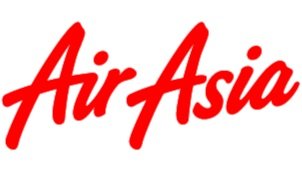#AskOurExperts IGTV Series with Airbus
Question and Answer with Patrick Baeumle, Vice President, Aircraft Environment Control Systems of Airbus
TRANSCRIPT:
(1) Can you explain how the air flows inside the cabin to mitigate any potential risk for passengers?
Let me begin by saying that clean air has always been a priority in Airbus cabin design, with airflow, pressure, temperature and quality continuously monitored
Actually the cabin provides a very low-risk environment for the transmission of viruses due to the advanced air ventilation and filtration systems, as well as the airflow patterns.
In fact, the air in the cabin is completely renewed every two to three minutes.
Very few environments and none in the transport industry see such a continuous replacement of air.
Now, how is it working? Basically, the air that you have around you in an aircraft is made up of two parts. Half of it is expelled overboard (i.e. out of the aircraft) and replaced by fresh air from outside. And the other half is recirculated air, as we say that has passed through highly efficient (HEPA) filters.
The air enters the cabin through vents near the overhead bins at a rate of 1 meter per second, then it travels in a downward direction and is subsequently removed through the floor
This strong downward flow prevents lateral or longitudinal air movement within the cabin, reducing the risk of cross-contamination between adjacent seat rows
The air then exits the cabin through floor-level vents and passes through High-Efficiency Particulate Arrestors (HEPA) filters.
This purified filtered air is then mixed with the fresh air drawn from outside the aircraft before entering the cabin.
This is how we ensure that cabin air is a very low-risk environment for virus transmission!
(2) We have read that HEPA filters are super-efficient, and deliver quality clean air that is equivalent to an operating theatre in a hospital. Is it true?
Absolutely! As mentioned the recirculated air goes through High-Efficiency Particulate Arrestors (HEPA) filters. These filters are super-efficient, hospital type, we can say.
Why do I say super-efficient? Because they are designed to capture particulates of about any kind, including microscopic bacteria and larger viruses such as the coronavirus.
They capture more than 99.9% of particulates. Which means that in the end the air around you is clean from viruses, microbes, and that’s very important to know!
(3) How often are these filters cleaned or replaced?
The HEPA filters are changed depending on the aircraft type at a scheduled maintenance time (we are talking about several thousand flight hours).
This schedule is continuously reviewed in the frame of continuous airworthiness activities.
The HEPA filters are designed to be efficient until their replacement. And generally, we apply safety factors. As an illustration, if we consider the efficiency is 18 months, we will ask for the replacement within a 12 month period.
(4) With HEPA Filters doing their job, can you explain why is it still important to wear masks on board?
Mask-wearing by passengers and crew will reduce the already low risk of virus propagation in the cabin.
The International Air Transport Association (IATA) and the European Aviation Safety Agency (EASA) recommend the use of face coverings for passengers and masks for the crew while onboard aircraft. It is an important part of a layered approach to biosecurity.
Wearing masks in an aircraft is no different from wearing masks in public transportation. You wear a mask to reduce the risk to contaminate others. It is an added precaution that passengers have to take responsibility for.
(5) Can you explain why people shouldn’t be worried about flying?
I think here it’s about the overall set of measures that we are taking – before boarding, onboard and after deboarding.
It starts by minimizing the risks of people entering the aircraft being contaminated. Taking temperature checks at the airport, having people fill in declarations, having tracing apps that can tell what people have, a set of measures that ensure the persons entering the aircraft have low risk to be contaminated is the first thing.
There is also the cleaning of the aircraft between flights.
As explained, onboard, the cabin is already one of the safest environments in the transport system!
The air in the cabin is refreshed and renewed every two to three minutes and the air that exits the cabin passes through the High-Efficiency Particulate Air (HEPA) filters remove more than 99.9% of particles from the cabin air, including bacteria and viruses, such as coronavirus.
It is also about personal hygiene behaviour onboard -- cleaning hands when you enter, wearing a mask during the whole flight particularly when you’re seated with a neighbour.
The fact that you’re seated for a couple of hours next to somebody, doesn’t represent a higher risk than being in another area where you will be close to people for a given period of time like shops.
6. Please share some tips for those who wish to travel...
What I can say is to follow all the precautionary measures that have been put in place:
Take good care of your personal hygiene
Respect the new procedures at airports and on-board aircraft
This way you can be assured that the risk of transmission is reduced to a minimum
We are in this together and together we can keep trust in air travel!

